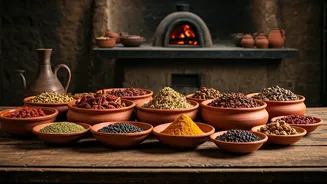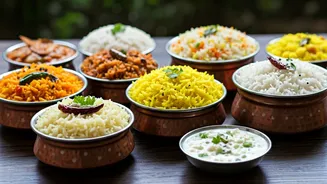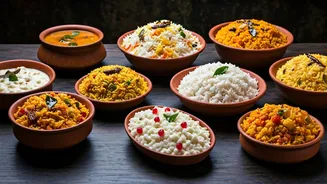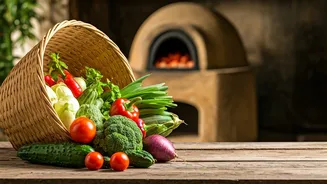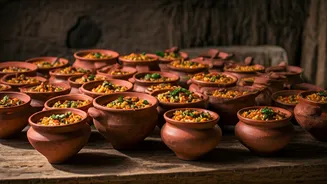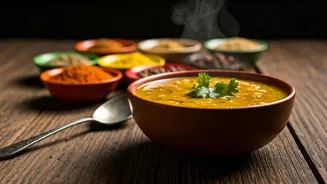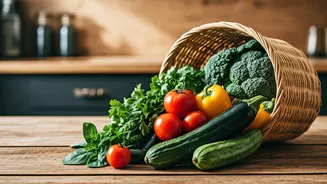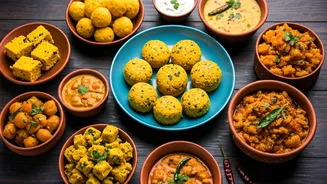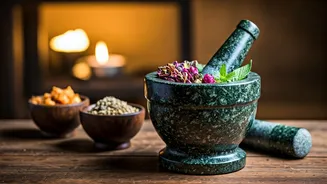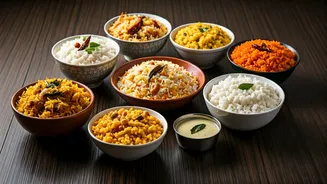Embrace Natural Ingredients
Tribal kitchens celebrate the bounty of nature, prioritizing fresh, locally sourced ingredients. This practice emphasizes seasonal eating, which connects
people with the rhythms of the natural world and promotes consuming ingredients at their peak nutritional value. Traditional recipes often feature wild greens, roots, and fruits, which are packed with vitamins and minerals, reflecting the tribes’ deep understanding of the health benefits derived from whole foods. Reliance on natural ingredients limits the use of processed foods, preservatives, and artificial additives. This approach champions a return to the basics of cooking and eating, focusing on nourishing the body with nature's gifts, and is a cornerstone of tribal culinary philosophy. This practice not only enhances the flavor of the dishes but also supports the local economy and reduces environmental impact.
Master Minimalistic Cooking
Tribal cooking frequently involves minimal processing and simple cooking techniques, often utilizing open fires, clay pots, and basic utensils. The emphasis is on letting the natural flavors of the ingredients shine through, rather than overcomplicating dishes with excessive spices or sauces. This minimalist approach often leads to dishes with enhanced flavors and improved nutritional value, as the less processing, the better the retention of nutrients. Techniques like steaming, boiling, and roasting are favored, which retain the essential qualities of the ingredients. This approach aligns with a philosophy of simplicity and sustainability, reducing waste and energy consumption. Furthermore, the limited use of elaborate cooking equipment makes it accessible and adaptable to various environments. The goal is to bring out the pure essence of the food through straightforward methods, creating delicious and nourishing meals.
Prioritize Food Preservation
In tribal cultures, food preservation is critical for survival. They utilize several techniques to extend the shelf life of food, ensuring a consistent food supply throughout the year. Drying, smoking, fermenting, and pickling are common methods. Drying helps preserve fruits, vegetables, and grains, concentrating flavors and nutrients. Smoking adds flavor while also extending the shelf life of meats and fish. Fermenting, used for items like vegetables and grains, not only increases shelf life but also enhances the nutritional value. Pickling, often done with fruits and vegetables, adds tangy flavors and enhances their preservation. These preservation methods provide a variety of tastes and textures while maximizing the use of available resources. These traditional methods are not just about food storage; they represent a deep respect for resources, a connection to the environment, and knowledge of nature's cycles.
Respect Sustainable Practices
Sustainability lies at the heart of tribal kitchens, reflecting a deep respect for the environment and its resources. Tribal communities practice sustainable agriculture, cultivating crops with a minimal environmental footprint. They often practice crop rotation, intercropping, and organic farming techniques, which nurture soil health and biodiversity. They also manage their resources by minimizing waste, reusing materials, and composting kitchen scraps. Water conservation is also a priority. They usually implement practices like rainwater harvesting and efficient irrigation methods. Hunting and fishing are also managed carefully, with a focus on seasonal harvests and respecting animal populations. These principles highlight the harmony between people and nature and ensure the availability of resources for future generations. This approach underscores the tribal’s responsibility for maintaining the health of the planet and preserving the traditions for the future.
Embrace Communal Eating
In tribal societies, eating is often a communal activity, strengthening bonds within the community. Meals are frequently shared in groups, fostering a sense of togetherness and social cohesion. Food preparation often involves the collaborative efforts of many, with different members contributing their skills and knowledge. This shared experience promotes a sense of inclusivity. During these meals, storytelling, laughter, and conversations create a vibrant social atmosphere, passing down traditions, sharing knowledge, and celebrating life together. This communal approach offers a sense of social support and strengthens the cultural identity of the community. In the process, it creates shared memories and celebrations and reinforces the value of working together. The communal meal is more than nourishment; it's a foundation of social life.
Discover Herbal Remedies
Tribal kitchens are also often closely linked with traditional medicine, with herbs and spices being incorporated into both cooking and healing practices. These communities have a rich understanding of the healing properties of plants. They use herbs not only to flavor food but also to address health issues, drawing on generations of knowledge. Turmeric, ginger, and garlic, for example, are known for their anti-inflammatory properties, while other herbs are used to aid digestion and boost immunity. The use of herbal remedies showcases the holistic approach of tribal cultures, combining food, medicine, and wellness. This fusion of culinary and medicinal practices highlights a deep understanding of the natural world and the interconnectedness of health and food. The emphasis on prevention and natural remedies reflects a proactive approach to well-being.
Value Cultural Identity
Tribal food is a key part of cultural identity, carrying traditions, stories, and history. Recipes are often passed down through generations, preserving cultural heritage and reinforcing a sense of belonging. The ingredients, cooking methods, and flavors reflect the region's unique climate, geography, and resources, creating a distinct culinary identity. Traditional festivals and celebrations often revolve around specific foods and dishes, celebrating cultural milestones and honoring ancestors. Tribal kitchens serve as a repository of cultural memory and knowledge, where younger generations learn about their heritage. This connection to cultural roots provides a sense of continuity and pride. The preservation of these culinary traditions is not only essential for maintaining a sense of identity but also for promoting respect for the tribal heritage.
